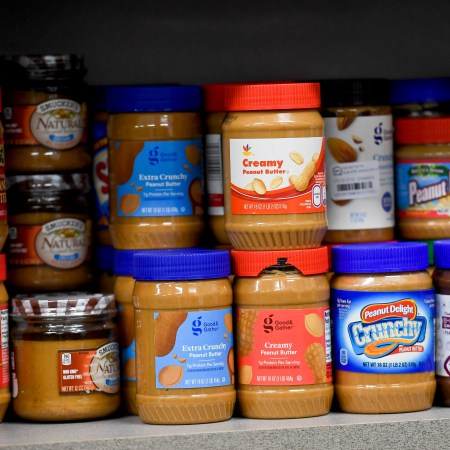There is an unwritten, universally understood rule in adult society that you don’t eat sugary cereal. The last time Captain Crunch, Frosted Flakes or Lucky Charms should be part of your daily routine is late middle school. College is good for the occasional ironic bowl at the cafeteria, but after that cereal is limited to Kashi or nostalgia, until you raise a couple kids and get to sneak a bowl of the hard stuff again.
This ideology can be applied to most packaged vices you’ll find in a grocery store. Candy, soda, chips and the like have a bad rep with health-conscious adults, or at the very least trigger some level of guilt when consumed. Thankfully, it’s not too difficult, especially after the high-fructose corn syrup/hydrogenated oils enlightenment of the mid-2000s, to identify which products are absolute crap and which ones make reasonably healthy stand-ins. Chocolate and almond butter cups, flavored seltzer water and vegetable chips all exist these days, after all.
There is one 2019 “food group,” though, that still triggers confusion: bars. Various energy, protein and granola bars are still sold at gyms, float around the kitchens of offices committed to healthy eating, and sponsor marathons or adventure athletes. There doesn’t appear to be any sort of consensus, though, on which of these bars — if any — actually provide a clean, healthy boost of energy.
Energy bars can be traced back to MRE (Meal, Ready to Eat) packets, a form of lightweight field ration for American combat forces to fuel up on the go, which came into vogue in the early 1980s. Those high-calcium blocks took their point of departure from Space Food Sticks, a 1970 Pillsbury invention that comprised non-frozen carbohydrates, fat and protein with (alleged) nutritional balance. Americans became enraptured with preservatives and packaged food in the latter half of the 20th century, and that, combined with the military/astronaut inspiration, paved the way for a Canadian athlete named Brian Maxwell to found a company called PowerBar in 1986.
PowerBar was a sensation, and soon became favored by cyclists and marathoners. At the height of its powers, in 2000, it was sold to Nestlé for $375 million. Meanwhile, the Clif Bar company was successfully marketing its energy bars to hikers and climbers, and more bars — some high in protein, others high in sugar — became commonplace in lunch boxes and vending machines around the world.
That energy, protein and granola bars are seen as relatively healthy is a direct result of savvy marketing, the portability of the product and a history that’s long been intertwined with athletes who log lots and lots of miles. But the athletes for whom these types of bars were originally designed didn’t sit in front of a desk all day, and their bodies were more than capable of processing the (sometimes terrible) ingredients said bars conceal.
But here’s the thing: those ingredients aren’t a secret. Every bar on the market is legally obligated to print its Nutritional Facts and ingredients right there on the packet. If you know what to look for, you can immediately make an informed decision on whether you should be eating it.
To better understand how to read those labels, we reached out to Karin Adoni Ben-David, a certified nutritionist and health coach who maintains a private practice in Los Angeles, and has previously worked as the Head of Nutrition at Reebok Sports in New York. Then we sent her the ingredients lists of eight well-known bars on the market today — from the KIND Nut Bar to Luna’s Lemonzest bar — and asked her to do a blind power-ranking, from least healthy to most.
Below, you’ll find Karin’s rankings, and an explanation for each bar. As it turns out, there’s an uncomfortable amount of low-quality ingredients in a lot of bars with familiar labels. But thanks to a couple newcomers in the space, there’s still hope for the energy bar.
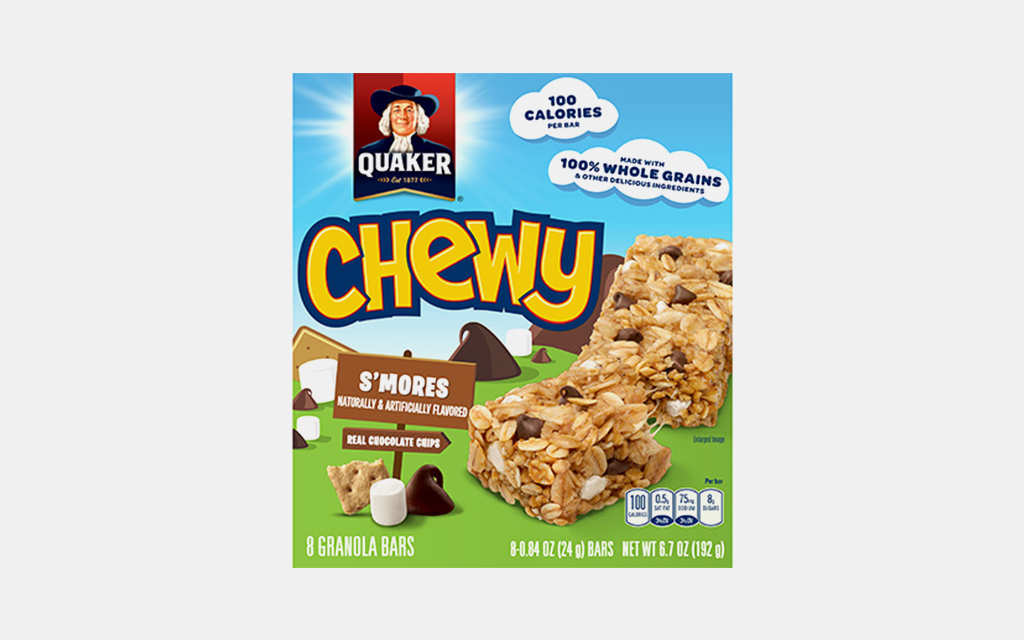
8. Quaker Chewy Granola Bars
Ingredients: Granola (whole grain rolled oats, brown sugar, brown rice crisp [whole grain brown rice flour, sugar, salt], whole grain rolled wheat, soybean oil, whole wheat flour, sodium bicarbonate, soy lecithin, nonfat dry milk), corn syrup, semisweet chocolate chips (sugar, chocolate liquor, cocoa butter, soy lecithin, vanilla extract), brown rice crisp (whole grain brown rice flour, sugar, salt), sugar, graham cookie pieces (whole wheat flour, sugar, palm oil, honey, natural flavor, salt, sodium bicarbonate, soy lecithin), dehydrated marshmallows (sugar, corn syrup, modified corn starch, gelatin, natural and artificial flavor, sodium hexametaphosphate, blue 1), corn syrup solids, invert sugar, glycerin. Contains 2% or less of soybean oil, calcium carbonate, sorbitol, salt, water, coconut paste, molasses, soy lecithin, natural and artificial flavor, caramel color, BHT (preservative), tocopherols (preservative), citric acid
Ben-David Says: “These bars are high in sugar; they have more than 16 different forms of it!!! Plus, this is a long lost of ingredients and that means it’s an ultra-processed food. I would advise avoiding them altogether.”
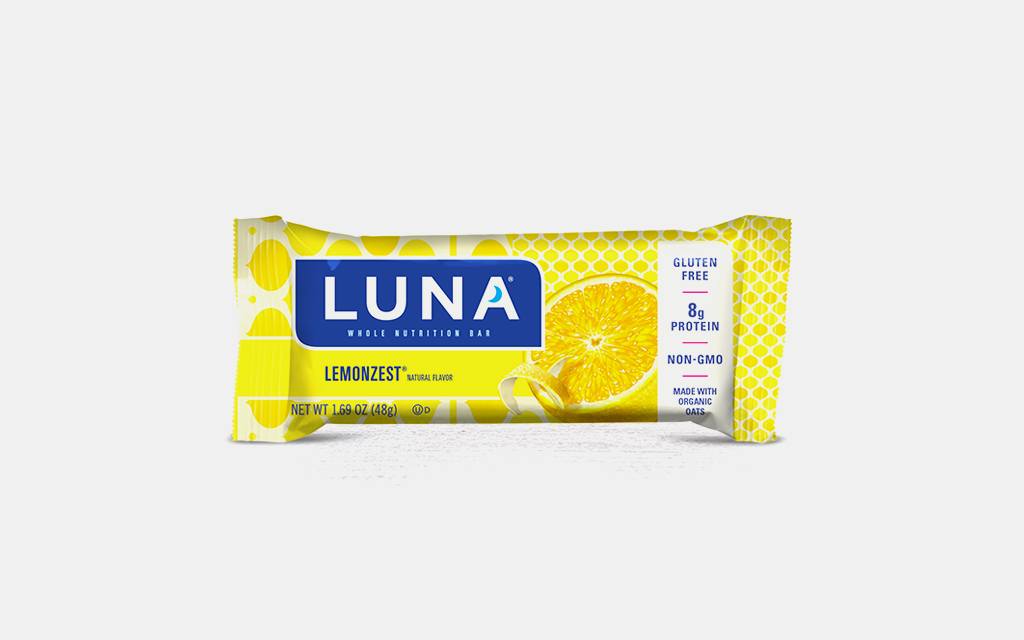
7. Luna Bar
Ingredients: Protein grain blend (rolled oats*, soy protein isolate, rice flour*, roasted soybeans*, soy flour*), brown rice syrup*, cane sugar*, chicory fiber syrup, high oleic sunflower oil, vegetable glycerin, palm kernel oil, palm kernel solids*, soy flour*, natural flavors, lemon juice concentrate*, glucose syrup, soy lecithin*, citric acid, sea salt, pectin, sodium bicarbonate (*organic ingredient)
Ben-David Says: “The first ingredient of these bars is a ‘protein grain blend’ followed by various syrups, sugars and oil solids. These ingredients aren’t high-quality and skimp on nutrients. Overall just a very sugary bar.”

6. PowerBar
Ingredients: Trisource protein blend (soy protein isolate, whey protein isolate, calcium caseinate), coating (sugar, fractionated palm kernel oil, whey, nonfat milk, cultured whey, soy lecithin, natural flavor), fructose syrup, glucose syrup, cane invert syrup, soy crisps (soy protein isolate, tapioca starch, salt), whole oats, peanut butter, roasted peanuts, peanut oil, and less than 2% of: vegetable glycerin, nonfat milk, soy lecithin, salt, natural flavor, butter (cream)
Ben-David Says: “This bar is ‘syrup, syrup, syrup.’ It has a variety of sweeteners like cane invert syrup, fructose syrup, and maltitol syrup. It’s also got a ton of processed ingredients. I wouldn’t expect this bar to nourish your body.”
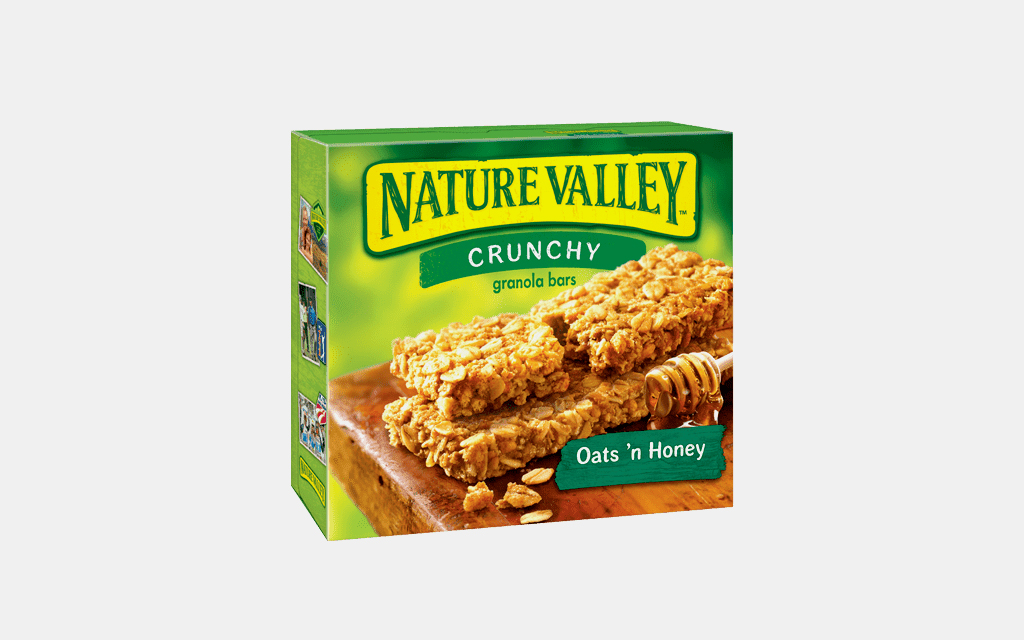
5. Nature Valley Bar
Ingredients: Whole Grain Oats, sugar, canola oil, rice flour, honey, salt, brown sugar syrup, baking soda, soy lecithin, natural flavor
Ben-David Says: “The first three ingredients on any label comprise the majority of the product. As two of those three here are sugar and oil, I would definitely avoid consuming these bars. The one good thing here is that it’s a short list of ingredients. But out of that short list, you have three different kinds of sugar. I wouldn’t recommend anyone eat this bar on a daily basis.”
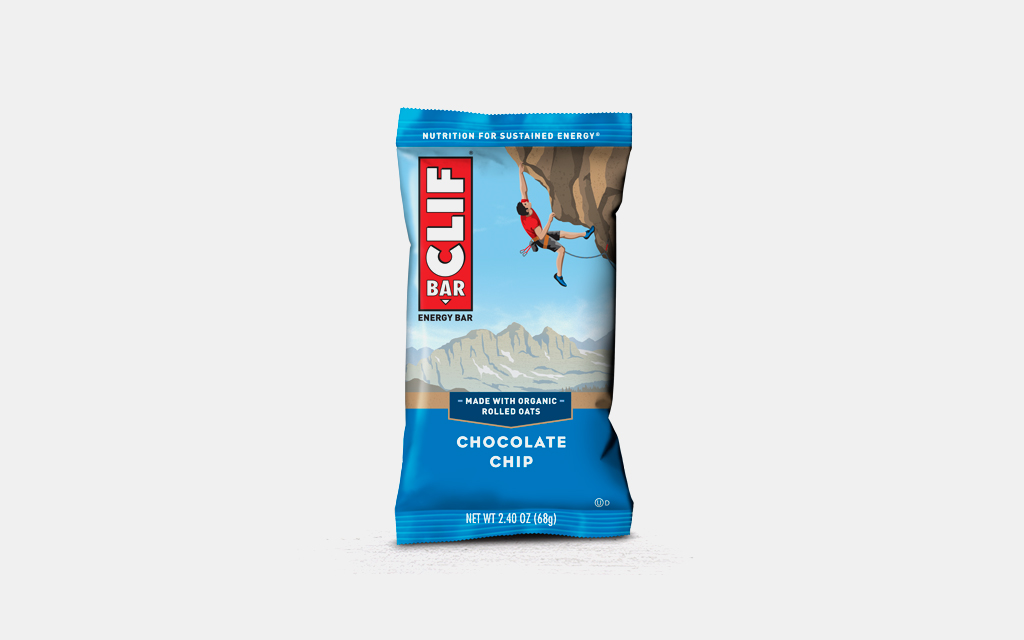
4. Clif Bar
Ingredients: Organic brown rice syrup, organic rolled oats, soy protein isolate, organic cane syrup, organic roasted soybeans, rice flour, cane sugar, unsweetened chocolate, organic soy flour, organic oat fiber, organic high oleic sunflower oil, cocoa butter, barley malt extract, sea salt, natural flavors, soy lecithin, organic cinnamon
Ben-David Says: “Although this bar contains protein (the third ingredient) the first, fourth and seventh ingredients are sugar. Yes, the bar does contain a good amount of fiber that comes from the rolled oats and soy. However, the amount of added-sugar is simply way too high. If someone is looking for a high-intensity workout bar, maybe I would consider it, but honestly, it makes more sense to choose fruits and nuts over this.”

3. KIND Nut Bar
Ingredients: Almonds, macadamias, cranberries, chicory root fiber, sugar, honey, rice flour, glucose syrup, soy lecithin, sea salt, Vitamin A, (Vit. A Acetate), Vitamin C (Ascorbic Acid)
Ben-David Says: “Almonds and macadamia are a great source of healthy fats, fiber, protein, manganese, thiamin, and the right amount of copper. So it’s excellent that those two are listed as the first two ingredients. Meanwhile the cranberries contribute antioxidants which help fight cancer-causing free radicals. However, these naturally tart cranberries are dried and combined with three added sugars. So, while you may get some health benefits when you chew on this, you may also be widening your waistline.”
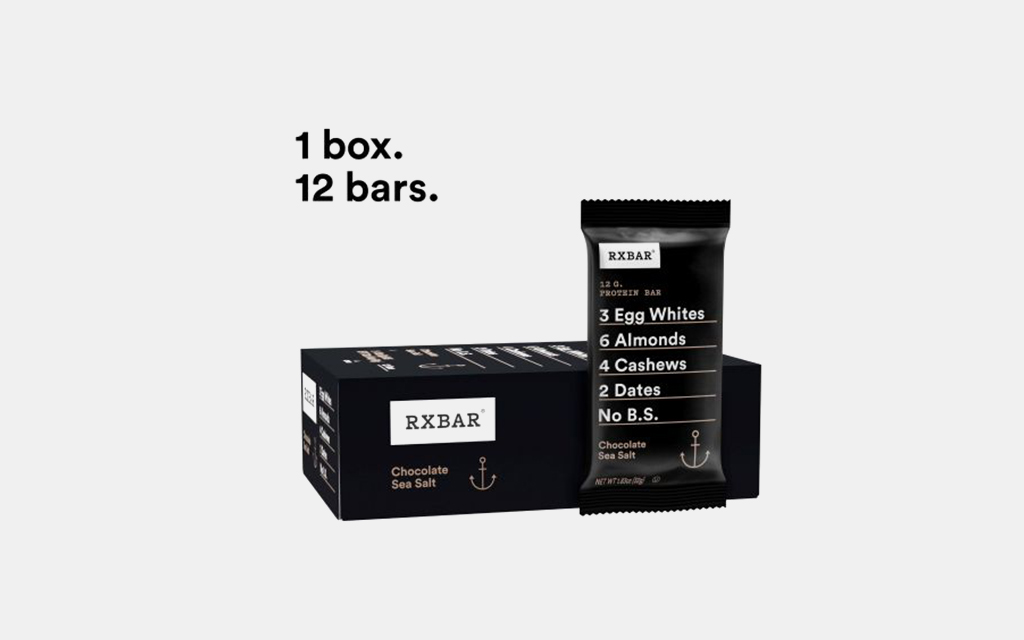
2. Rxbar
Ingredients: Dates, dried egg whites, cashews, almonds, chocolate, cocoa, natural flavors, sea salt.
Ben-David Says: “The ingredients are clean in this one. This bar uses dates as its base which is great because they pack sweet flavor and also contain fiber and other nutrients. The use of egg whites is excellent. That’s a high-quality protein that provides the amino acids muscles need to repair and rebuild, allowing you to recover from exercise and get stronger over time. Add some high-quality fats such as almonds and cashews, and you have a tremendously balanced bar with high-quality ingredients.”
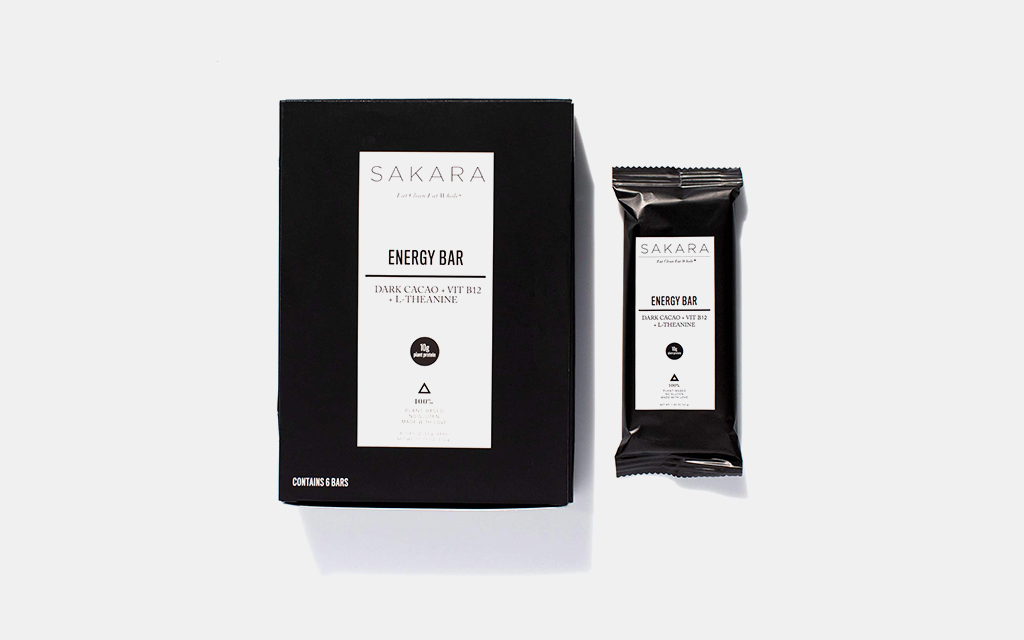
1. Sakara Bar
Ingredients: Organic raw hemp protein, organic sunflower seed butter, organic dates, organic cassava rot fiber, chicory fiber, organic almonds, organic cacao nibs, organic cacao powder, Himalayan pink salt, L-Theanine, Vitamin B12.
Ben-David Says: “This bar contains wholesome ingredients, healthy fats, it’s high in fiber and protein, and has the right amount of antioxidants, vitamins, and minerals. Overall a great, high-quality bar!”
This article was featured in the InsideHook newsletter. Sign up now.




